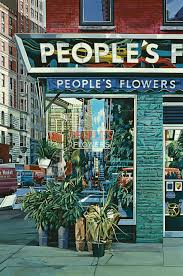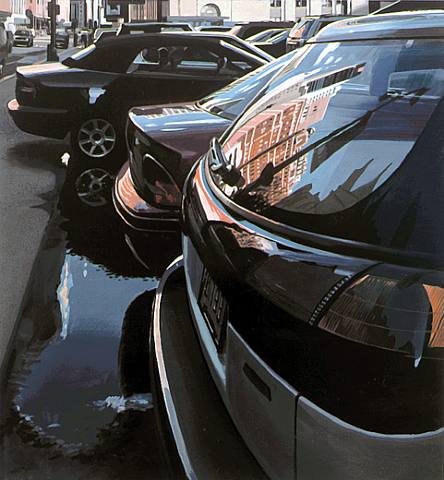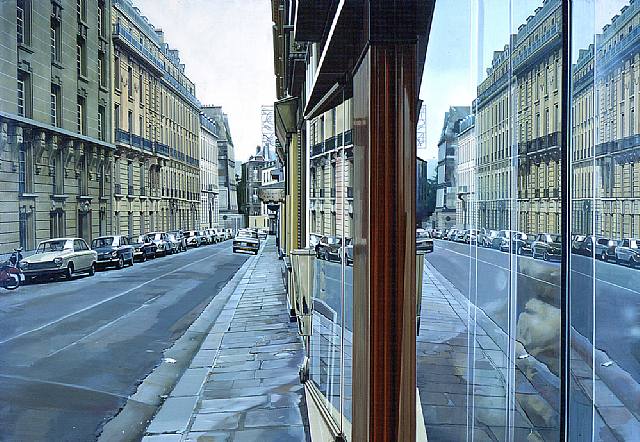-


 Richard Estes
Richard Estes
American
Artist
Richard Estes belongs to a rich history of artists who have depicted New York City, and has a detailed knowledge of the city's diverse architecture, infrastructure and habitants. Although not a native New Yorker, New York has been his home and a recurring motif in his work for over 30 years. Habitually depicting urban landscapes,
Estes begins with photography to collect and record information. Richard Estes then works free-hand to paint in a fluid and open-ended process his remarkably intricate and realistic scenes. While unquestionably reconstructing reality, Estes' paintings and prints expand the sensory range of the viewer allowing a greater focus and providing more information than the naked eye. His prints are no exception in creating this extrasensory experience. They are built up in layers of color and capture a palette and vitality similar to the detailed clarity of his paintings. Richard Estes remains a prominent figure in the contemporary art world, and has secured a place in art history as one of the most captivating American realists to date.
Richard Estes was born in 1932 in Kewanee, Illinois. He moved to Chicago at an early age and studied fine arts from 1952 to 1956, with a concentration on figure drawing and traditional academic painting, at the School of the Art Institute of Chicago. Richard Estes frequently studied the works of realist painters such as Degas, Hopper and Eakins, who are strongly represented in the Art Institute's collection.
Richard Estes moved to New York City in 1956, after he had completed his course of studies, and worked for the next ten years as a graphic artist for various magazine publishers and advertising agencies in New York and Spain. During this period Richard Estes painted in his spare time, and by 1966 he had saved enough money so that he could devote himself full-time to painting. Most of Estes' paintings from the early 60's are of New Yorkers engaged in everyday activities.
It was around 1967 that a shift occurred in his city scenes: Richard Estes began to paint storefronts and buildings with glass windows partially reflecting images of the street scene in front of the building. These paintings were based on color photographs he would make of his object, which trapped the evanescent nature of the reflections, which would change in part with the lighting and the time of day. While some amount of alteration was done for the sake of aesthetic composition, it was important to Estes that the central and the main reflected objects be recognizable, but also that the evanescent quality of the reflections be retained. Richard Estes had his first of many one-man shows in 1968, at the Allan Stone Gallery in New York.
Richard Estes is the best of the Photo-Realists in terms of handling paint, building forms and expressing himself in his work. There is mind and emotion at work in Estes, though he would deny the latter quality. His concern for visual observation is so acute, his awareness of symbolic or emotional content apparently so minimal, that it might be said of Estes, as it was of Monet, that "he is only an eye; but what an eye." Estes has exhibited in galleries and museums worldwide. Richard Estes's work can be found in public and private collections including the Art Institute of Chicago, the Hirshhorn Museum and Sculpture Garden in Washington D.C., the Museum of Modern Art and the Whitney Museum of Fine Art, both in New York City.